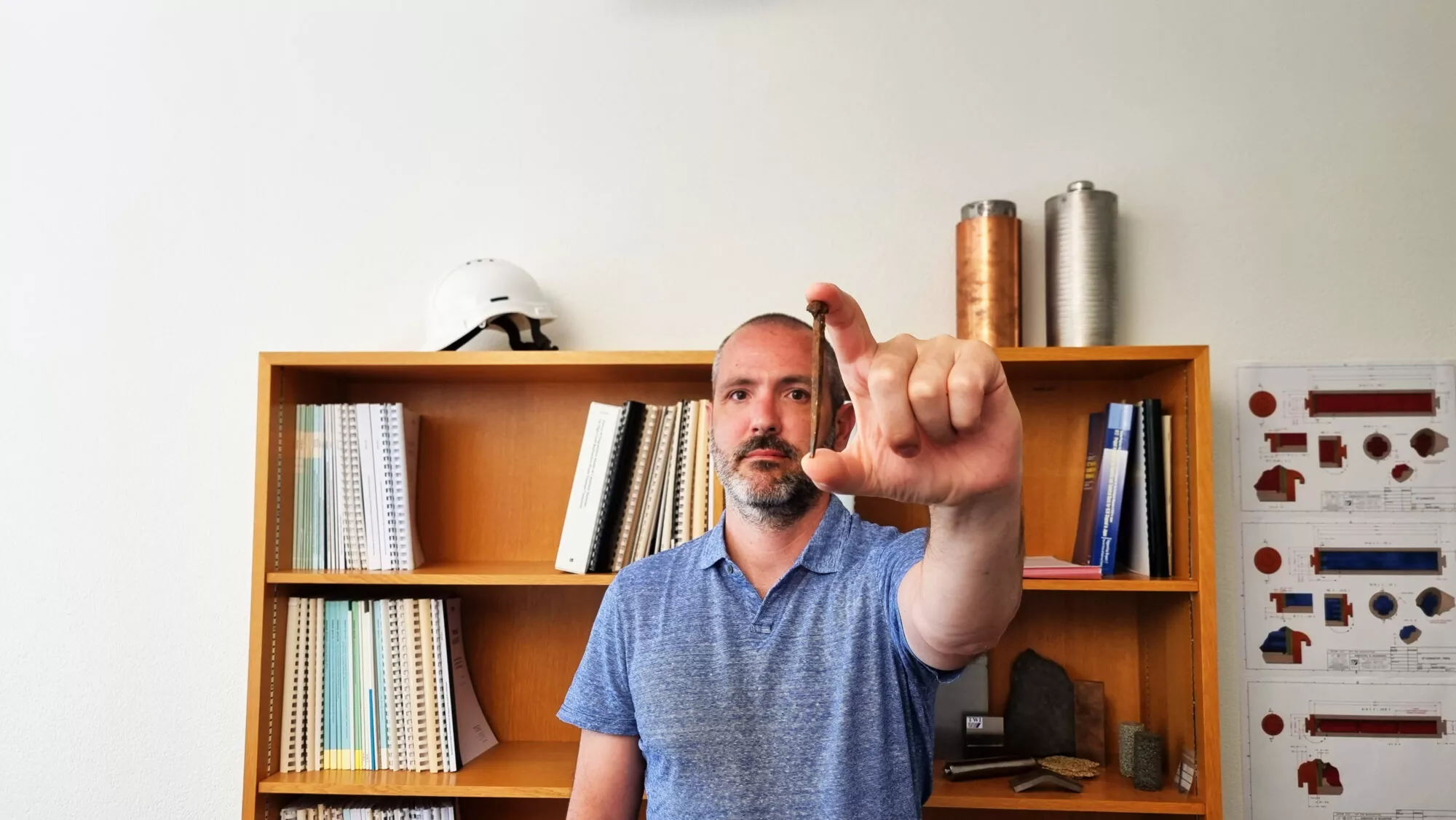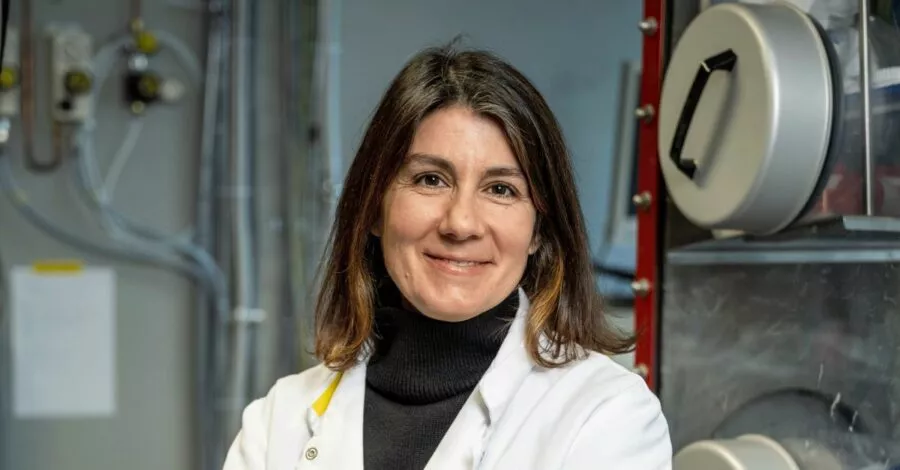
What Nagra can learn from the ancient Romans
In a deep geological repository, disposal canisters will safely enclose the waste for several thousands of years. Over time, the canisters will begin to rust. What chemical processes will take place then, and how and where will the rust spread? Two-thousand-year-old nails are to provide some answers to these questions.
“I suddenly had an idea for how to solve a problem that had been bothering me for a long time: How can you closely examine an object buried in the ground without digging it up?” says Nikitas Diomidis, Head of Nagra’s Safety and Performance Assessment Section. “I attended a lecture on neutron imaging at a symposium,” Diomidis recalls. This investigation method resembles X-raying, but relies on neutron radiation instead of X-rays.
That was in 2017. Since then, the idea has matured into a large-scale research project led by the Swiss Federal Institute of Technology in Lausanne. The focus is on 2,000-year-old Roman nails and the development of a novel neutron and X-ray computed tomography method.
A long-term experiment found in nature
In previous research projects on deep geological disposal, Roman nails were investigated in so-called analogue studies. These studies made use of the fact that physical and chemical processes in nature – such as those to be expected in the repository – already took place over very long periods of time. The Roman nails have been in the ground for around 2,000 years. There, they rust, or, to use the technical term, corrode.
Nagra’s disposal canisters, in which the high-level radioactive waste will be packaged, will also corrode. However, Nagra’s long-term experiments last several decades at most. In contrast, Roman nails are a corrosion experiment in nature that has been ongoing for 2,000 years. “Once we have a precise understanding of the processes and mechanisms surrounding the corrosion of the Roman nails, we can derive valuable information about the corrosion of our disposal canisters,” Diomidis explains.

A close look without the need to unearth anything
The study of Roman nails to date has involved one problem: by digging up the nails, we disrupt the system. For example, it is no longer possible to precisely understand the spatial distribution of the corrosion products in the soil.
A novel method can remedy this. The process relies on a three-dimensional scan of a part of the soil containing an ancient Roman nail, first by means of neutron and then by X-ray computed tomography. Each element absorbs neutron and X-ray radiation differently. Therefore, two absorption values are obtained for each element: one for the X-rays and one for the neutrons. “Thanks to the combination of the two values, we can derive the chemical composition of the material. And thanks to the 3D scan, we can also see the spatial distribution of the corrosion products in the ground. This allows us to understand the corrosion processes much better than before,” Diomidis is pleased to announce.
Cross-section of a neutron computed tomography
Neutron tomography of corroded iron rod in bentonite carried out at the ICON cold neutron imaging facility at Paul Scherrer Institute.
Not only of interest to Nagra
This novel investigation method is not only of interest to those involved in research on deep geological disposal: archaeologists also hope to gain insights that will allow them to better preserve excavated corroded archaeological artefacts.
In the construction industry, fundamental questions regarding the corrosion of reinforcement steel in concrete remain unresolved. With the new method, the processes in question could be investigated directly in the concrete. The data obtained could also be used to create more reliable prediction models for structures. The research project is being supported by the Swiss National Science Foundation.
Tracking down corrosion
The so-called CORINT project was launched in 2022. Nagra is a partner in the project. Further information can be found on the project website.
Similar articles
What does Switzerland think about the deep geological repository?
Switzerland is confident that it can realise the project of the century of deep geological disposal. A recent, representative survey shows that acceptance is high across the whole of Switzerland and in the affected region.



